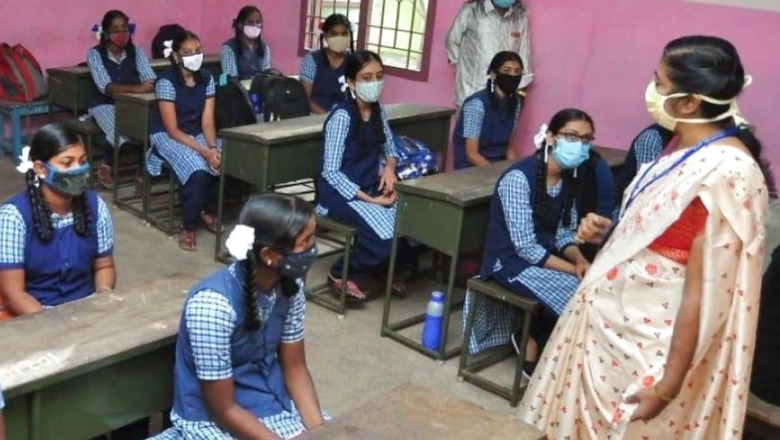
views
Like the unseen torpedoes from Nazi U-boats created panic in Allied shipping lines in the 1940s, mounting evidence about the psychosocial impact of COVID-19 pandemic on children is creating panic among parents and educationists. Lakhs of schools remain locked, with millions of children at home. As COVID-19 is beginning to be recognised as a long-term situation and no longer an ugly nightmare that is going to disappear in a jiffy, the question on everyone’s lips is: when will schools reopen?
Last week, I had a parent couple walk into my clinic with their 6-year-old son. They were worried about his fidgetiness, which seemed to have worsened over the past few months. Online school had been a disaster, they said, he would hardly sit for a while in front of the mobile; they had to sit with him post the online classes to make him do his “screen work (home work!)”. They were worried how he would ‘catch up’ with academics once school reopened.
The last 16 months have been unlike anything children have seen. In fact, they have been unlike anything anyone—young and old—would have imagined. Which is why no one is an expert anymore and everyone is shooting in the dark, even when it comes to reopening schools.
But reopen we must, sooner than later. However, it is going to be twice as hard. It is certainly not the ‘home coming’ of sorts or the ‘enigmatic’ return to innocence that many are claiming it to be. Challenges on multiple counts seem unsurmountable, but two appear most significant.
Focus on Healing and Restoration
One, of course, is the physical ways in which the world has changed. Social distancing and COVID-appropriate behaviour are here to stay, and following them in schools is easier said than done. Task forces tasked with providing guidelines have few if any specific references to cite; therefore, sharing basic scientific guidelines and letting schools adapt to suit their needs would be the best way possible. Prioritizing vaccination for staff, fast-tracking vaccination for children and training staff and students to this new reality is essential but doable.
The second and far more insuperable challenge is centred around softer skills. Children going back to schools in 2021 are no longer the ones who walked out in March 2020. They are the survivors of a catastrophe. Raised in prosperity, this is a generation that has faced sudden and prolonged adversity and has been traumatised. And, their healing and restoration should be our top priority.
ALSO READ | What Parents Must Watch Out for: COVID Symptoms & Pandemic Effect on Kids’ Mental Health
For schools, and even most parents, priority agendas are syllabus completion, examinations, fees, sports events etc. Some would even think that let the schools begin and we could figure out how to do this as we go along. In all this, children’s psychosocial health could possibly be brushed under the carpet.
Various studies over the past year have shown that levels of anxiety, depression sleep disturbances, stress, especially about academic performance, have soared to never seen before levels among children. There are three stakeholders for children—parents, school management and staff, and the regulating authorities (government, boards, etc.).
All three must step up to the table; however, I must say I believe parents have the greatest say. No government will risk angering this huge segment of the population. Schools too have become more dependent than ever on parents. Hence, parents across the country must take the initiative.
The aim must be to get students back to school as soon as possible and to the new normal as cautiously as possible. The idea is to look at it as a psychosocial rehabilitation, gradually moving into an academic programme.
Don’t Start with Academics
It would be a mistake to start with academics. Children who have been away from school for the last year-and-a-half have ‘adjusted’ to being at home, without a schedule and taxing academics, and not seeing their friends every day. Those from less privileged backgrounds have had limited access to online education; the incidences of child labour and child marriage have increased. Many have faced trauma which may have gone unrecognised.
As they all return to schools, there would be uncertainty, performance anxiety and separation anxiety too, even in older children. We cannot begin with ‘focus on the syllabus’. Let us start with children meeting and greeting each other. They have to first learn to trust each other—and the world, again. They have to learn to stay away from the comforts of home, and gradually learn to focus in classrooms.
Getting children to participate together in music and dance classes or exercises sessions can help. Similarly, making small teams and assigning them projects and goals will help children bond better even as they learn to collaborate and take care of each other.
Let children acclimatise. We may have to start by preparing a new schedule for them and helping them get used to it. Parents must begin by talking to their children. We need to ask them how they feel and what they think about this big change in their lives. These conversations may be more illuminating than webinars by experts. Many may be unwilling to go to school. There could be children who were bullied at school or in the school bus. For them, the lockdown has been heavenly. Now, they are faced with the prospect of facing these bullies again! What about those who had phobia about the school toilet, or dreaded reading in the class? These children will need many conversations to get them to accept this change.
Digitally addicted children have a tough time ahead. Return to school will be akin to enlisting into a de-addiction and rehab centre. They will have to deal with long absences from gadgets. They may show withdrawal symptoms, like tantrums and frustration. We need to motivate them to engage socially, and be patient with them while they get used to the change.
Let us not ignore children with learning disability and special needs. They have missed the familiarity of a routine. Rehabilitation programmes have gone for a toss. Resource rooms need to get functional again.
Teachers Will be Frontline Warriors
Teachers will have to be trained to look for signs of illness in the classroom. Not everything will be COVID but the mind will be suspicious.
Doctors and health workers have been the COVID warriors thus far; now teachers will have to step in to save the younger generation. They will have to step up to the role of nurses, counsellors, friends, mentors, even parents for the tiny ones facing separation anxiety, in addition to helping students catch up with the syllabus. Doctors are trained to save lives; teachers have not been trained for all this. I truly think what we will be asking of them will be as exemplary as what we have asked of health workers.
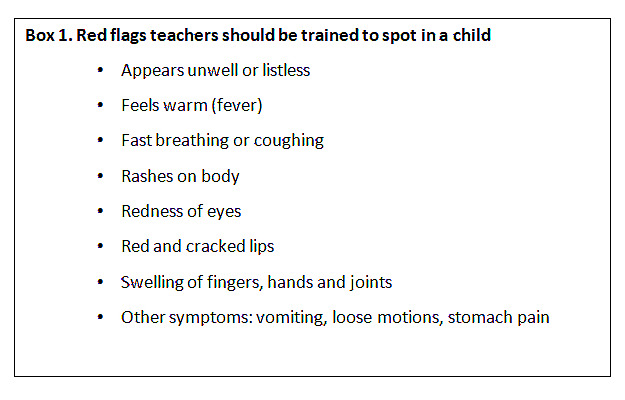
We will have to begin with plans to train teachers—help them recognise signs of physical illness as well as mental distress, subtle and not too subtle. We will have to train them to handle all kinds of grief in the classroom. We need to help teachers understand the issues and learn to individualise children who need more help than others. They need to be taught to recognise the red flags and refer such children to professionals.
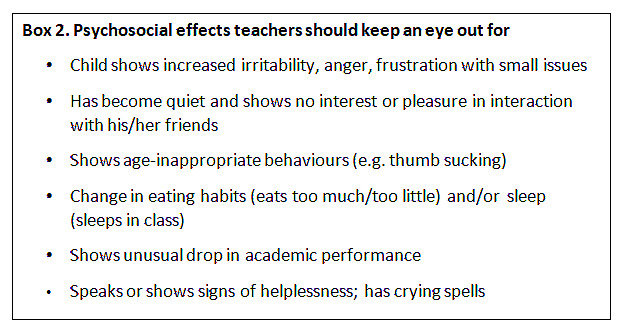
Academics can follow all this. Entirely to their credit, teachers have innovated during the pandemic, spent double the number of hours at work while managing their own homes and families without any help. Yet, does one have any clue about what has been the quality of teaching?
How and where do teachers begin when classes reconvene? Do they start with the syllabus missed over the last 16-18 months and cover it in a month to bring everyone up to speed? Will every student be able to handle this? Who will train them to learn at this new rate? Will there be a bridge course? Do we have parameters to monitor the quality of deliverables? Will all parents be able to support this?
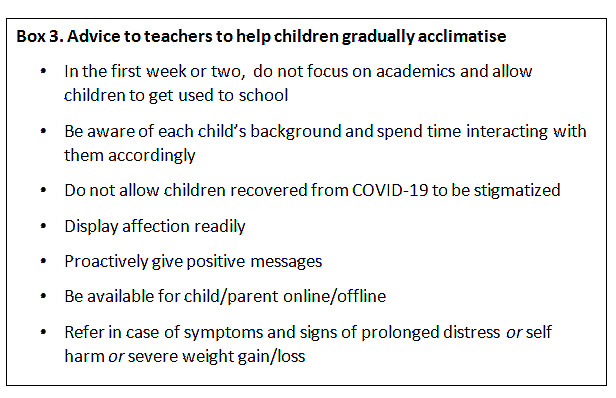
What we all seem to be missing is: schools will never be what they were in March 2020, at least not for a long time. Innovate, amend, innovate will have to be the mantra going ahead. There are no easy solutions, but that does not mean we should not attempt to find one. Identifying needs as per different age groups (pre-primary, primary, teens) as well as different social backgrounds and different psychosocial impact of the pandemic will be imperative.
I believe we need to focus on the following core areas for students:
1. Building values like resilience, empathy, collaboration, care
2. Introduce special curriculum for emotional wellbeing, like yoga, free expression, drama, music, sports
3. Focus on children’s nutrition, diet, sleep, hygiene, dealing with illness at home
4. Prioritise teachers’ welfare
I believe the education system should focus on:
1. Individualisation of student and teacher needs
2. Encourage and guide parental participation
3. Develop guidelines for similar concerns
4. Limit group size
5. Introduce art-based education in schools
6. Redefine syllabus and assessments
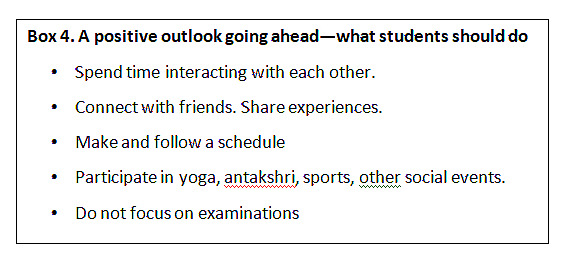
The next three to six months will be key in shaping the future of education for this decade. As we lobby furiously to reopen schools as soon as possible, and rightly so, educationists must prioritise how to reconstruct education over the next three years. Intense debate and discussion should take place; closely monitored pilot and anecdotal studies will have to be commissioned immediately.
It is obvious that schools need to reopen now. The narrative will have to be about how and not when to reopen schools.
Dr Samir Hasan Dalwai, MD, is a Developmental Behavioural Pediatrician at New Horizons Child Development Centre. He is Joint Secretary, Indian Academy of Pediatrics and serves on the Government of Maharashtra Task Force for Pediatric Covid-19. The views expressed in this article are those of the author and do not represent the stand of this publication.
Read all the Latest News, Breaking News and Coronavirus News here.




















Comments
0 comment